How to Train Your Players to Be Fast, Not Slow
Speed Training by Mike Grafstein B.Ph.Ed, CAT (C), YCS, MT Senior Therapist and Conditioning Consultant Bryst International Inc.
- Develops a proper motor program.
- Creates active full range of motion to prevent injury
- Teaches body control.
- Start with the soccer ball held by both hands.
- Place the hands such that the palms are facing up and the elbows are close to or at shoulder height.
- Lower the body by bending at the hips and knees.
- The pressure at the foot should be felt in the mid-foot or heels.
- Lower until the thighs are parallel to the ground
- As you rise to return to the staring position imagine your glutes becoming strong and tight. Squeeze your buttocks tight. Push from the heel.
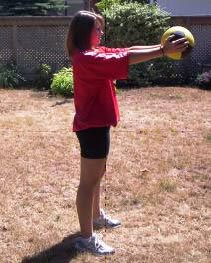 |
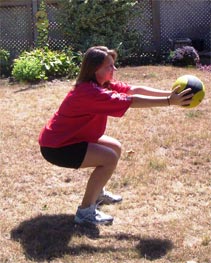 |
- Start with your feet shoulder width apart.
- Place either the soccer ball in both your hands with the arms straight. Elbows and wrists should be at shoulder height.
- Take one step forward with your left leg.
- Keep your stomach tight.
- The left thigh and right shin should be parallel to the ground. The left shin and right thigh should be close to vertical.
- The right heel should be off the ground.
- Push off from the heel and squeeze the glutes tight.
- Repeat the same for the other leg.
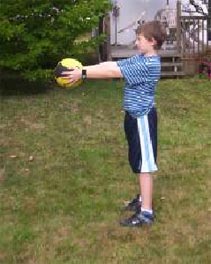 |
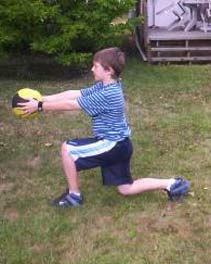 |
- Start with your feet shoulder width apart. Arms forward holding a soccer ball.
- Take one step backward with the right leg.
- Keep your stomach tight.
- The right shin and left thigh should be parallel to the ground. The right thigh and left shin should be almost vertical.
- The right knee should be off the ground.
- Push off from the back leg and squeeze the glutes tight.
- Repeat the same for the other leg.
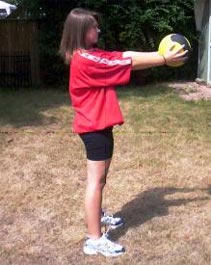 |
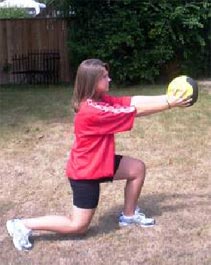 |
- Dynamic Warm up 5-10 minutes
- Squat-Lunge-Sprint circuit.
- Stand with your body leaning forward at a 45 degree angle with both hands supporting against a wall, fence or partner. One partner supports and the other partner does the exercise.
- Alternate bringing your knees to your chest. Do it for five seconds then rest. Repeat the process ten times.
- As you become more comfortable with the process increase the time doing the drill. It is important that the back stays straight during the exercise.
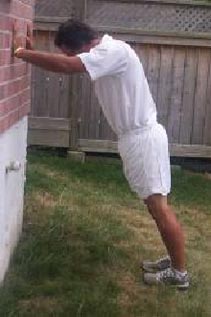 |
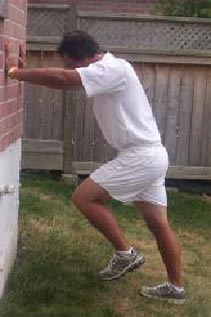 |
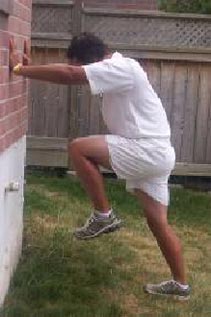 |
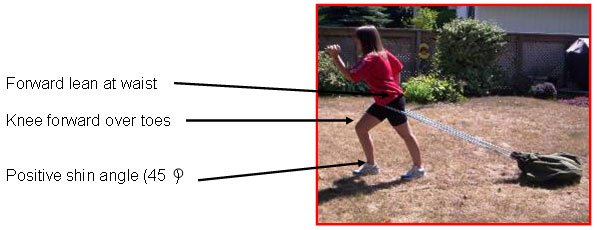 In this picture the back is slightly forward and the right leg is slightly forward. Ideally the right arm should be positioned back with the elbow close to shoulder height.
This simple exercise teaches players to be in the acceleration position. This naturally puts them in a position where they must demonstrate proper acceleration technique. Completing these drills/exercises will develop a solid blueprint for success in the future.
Next teach your athletes to �march�. Show them marching in place. Once they have that coordination progress to a walking march.
In this picture the back is slightly forward and the right leg is slightly forward. Ideally the right arm should be positioned back with the elbow close to shoulder height.
This simple exercise teaches players to be in the acceleration position. This naturally puts them in a position where they must demonstrate proper acceleration technique. Completing these drills/exercises will develop a solid blueprint for success in the future.
Next teach your athletes to �march�. Show them marching in place. Once they have that coordination progress to a walking march.
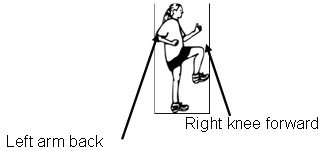
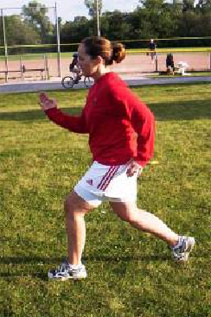 |
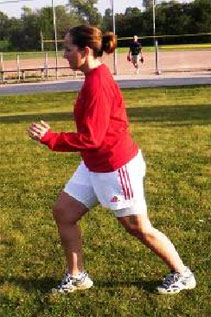 |
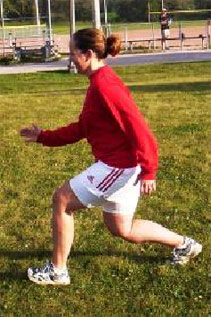 |
B.Ph.Ed,CAT(C),CSCS,YCS,RMT
Senior Therapist, Conditioning Consultant
Bryst International Inc.
Creator and Owner of
www.youth-soccer-fitness.com